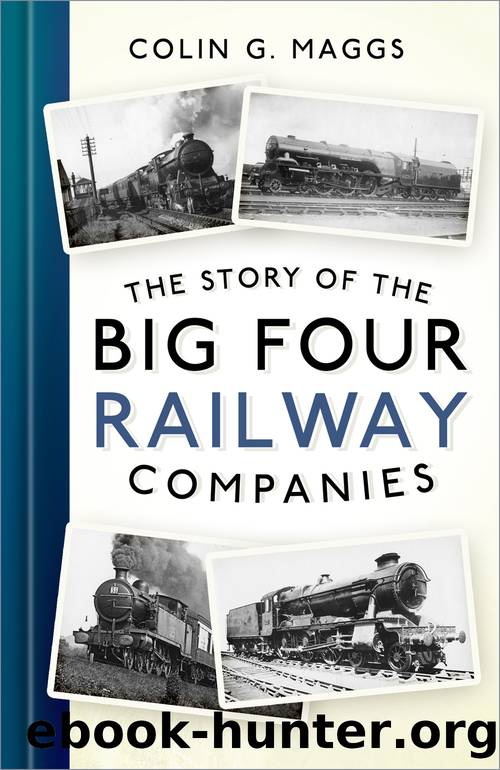The Story of the Big Four Railway Companies by Maggs Colin G.;

Author:Maggs, Colin G.;
Language: eng
Format: epub
Publisher: History Press Limited, The
10
THE LONDON & NORTH
EASTERN RAILWAY
The LNER was the second largest of the Big Four. It justified its sobriquet of âLondon and Nearly Everywhereâ Railway. Its lines extended into many parts of England and Scotland and just ventured into North Wales. It had important continental links by its own steamships from Harwich and Grimsby. With the LMS it shared steamer services on the Firth of Clyde and Loch Lomond. Despite its name, the LNER reached the west coast at Liverpool, Chester, Southport, Silloth and Mallaig. In Scotland, north of Glasgow the LNER was a west coast line, while continuing to be an east coast line from Edinburgh to Aberdeen and northwards as far as Elgin. To operate its 7,000-plus miles of track, the LNER used about 7,400 steam locomotives, 21,500 coaching and 282,000 freight vehicles, together with electric stock. It owned twenty-two steamers and twenty smaller vessels.
The LNER divided its system into four areas â London, York, Edinburgh and Aberdeen â each in the charge of an area general manager. These areas worked as a federation under the overall control of the chief general manager, Sir Ralph Wedgwood, in London, but headquarters exercised fairly loose control over the day-to-day affairs of the areas. The LNER had three London passenger termini: Kingâs Cross, Liverpool Street and Marylebone. Standardisation of equipment and practices was slow, particularly as the financial position of the company weakened under the influence of the decline of the heavy industries of the north-east during the long-term depression. It was more dependent on freight than the other railway companies.
The LNER chairman was William Whitelaw from the North British Railway and deputy chairman Lord Faringdon from the Great Central. Economy was essential for the new railway company and the number of staff employed was reduced from 207,500 in 1924 to 175,800 in 1937, despite more train-miles being operated.
Initially as a quick fix, engines and vehicles belonging to the various pre-grouping companies were distinguished by letters added to numbers: D for Darlington, or Y for York, for former North Eastern stock; N for Great Northern; C for Great Central; E for Great Eastern; B for North British; and S for Great North of Scotland. A similar system applied to coaching, goods and mineral stock.
In due course it was found more convenient to have a new numbering system using the format:
Download
This site does not store any files on its server. We only index and link to content provided by other sites. Please contact the content providers to delete copyright contents if any and email us, we'll remove relevant links or contents immediately.
Life 3.0: Being Human in the Age of Artificial Intelligence by Tegmark Max(4522)
The Sports Rules Book by Human Kinetics(3597)
ACT Math For Dummies by Zegarelli Mark(3568)
The Age of Surveillance Capitalism by Shoshana Zuboff(3433)
Blood, Sweat, and Pixels by Jason Schreier(3140)
Unlabel: Selling You Without Selling Out by Marc Ecko(2990)
Urban Outlaw by Magnus Walker(2953)
Hidden Persuasion: 33 psychological influence techniques in advertising by Marc Andrews & Matthijs van Leeuwen & Rick van Baaren(2792)
The Pixar Touch by David A. Price(2745)
Bad Pharma by Ben Goldacre(2737)
Project Animal Farm: An Accidental Journey into the Secret World of Farming and the Truth About Our Food by Sonia Faruqi(2668)
Brotopia by Emily Chang(2596)
The Content Trap by Bharat Anand(2499)
Slugfest by Reed Tucker(2425)
The Airbnb Story by Leigh Gallagher(2380)
Kitchen confidential by Anthony Bourdain(2323)
Coffee for One by KJ Fallon(2019)
Smuggler's Cove: Exotic Cocktails, Rum, and the Cult of Tiki by Martin Cate & Rebecca Cate(1996)
Beer is proof God loves us by Charles W. Bamforth(1937)
